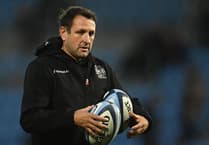Times Sport editor John Hutchins offers his personal opinion on the events, topics and personalities in the world of sport.
NO less than four footballers from the 1966 England World Cup winning team – Nobby Stiles, Ray Wilson, Martin Peters and Jack Charlton — are suffering from either memory loss or dementia.
There is a growing belief, backed by scientific study, that the cause of this brain damage was by repetitive heading the ball — balls, which in those days, were made of leather and weighed far heavier when saturated with water. ‘It was like headbutting a brick,’ was one poignant description by a former player of that era.
Jeff Astle, who played for West Bromwich Albion and England in the 1960s and 70s, was diagnosed, aged 54, with Chronic Traumatic Encephalopathy – a condition, the equivalent of ‘punch drunkeness’ endured by boxers. Astle, who died, in 2002, aged just 59, was renowned for scoring goals with his head. His family said that in his later years that he could not even remember he had played football.
The coroner ruled that his death was caused by ‘industrial disease’ — his brain had been damaged by heading footballs. Dawn Astle, his daughter, is now campaigning for recognition by the footballing powers of his condition, which, in her father’s case, led to tragic consequences.
So why have the footballing authorities, and the English FA, in particular, not grasped the obvious link between brain injury and former players? Is it, I suspect, despite the fortunes floating around modern day football, that they do not want to be exposed to litigation and compensation by professional players or their families.
It is a conundrum. All sports, particularly as contact sports such as football, rugby and boxing, all carry risk of injury – to some this even adds to its appeal.
Now, there have been calls — even though modern, lightweight footballs, are not as dangerous as the old style balls — for banning the heading of footballs at junior level. To be honest, I don’t know, if I could agree with that. However, these terrible, accumulative injuries cannot be ignored. The long term health of players, both professional and amateur, must be protected by those in authority, for the sake of the present and future generations of the game.





Comments
This article has no comments yet. Be the first to leave a comment.